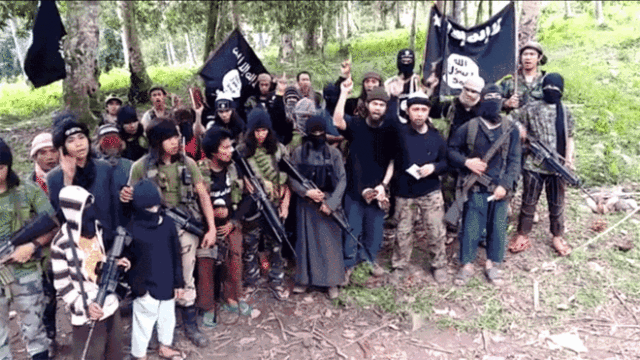
Briefs
Publication: Terrorism Monitor Volume: 15 Issue: 5
By:

Somalia: One Step Closer to Defeating al-Shabaab
In the build up to his election as Somalia’s president, Mohamed Abdullahi Mohamed announced he would invite al-Shabaab for a “sit down and discussion” (Twitter, January, 28). His rhetoric toward the group since then has been less welcoming. The new president, known as Farmaajo, appears confident that he could be the one to bring an end to the al-Qaeda affiliate’s violent insurgency. Indeed, there is much that is in his favor.
Farmaajo was elected by legislators in the second round of voting on February 8 (Africa News, February 8). The result was something of a surprise — he had come second in the first round of voting, trailing behind the then-incumbent Hassan Sheikh Mohamud, and lacked the kind of regional support bases enjoyed by his rivals — but was welcomed by Somalis and the international community.
At his inauguration on February 22, Farmaajo vowed to build Somalia’s military capacity and continue the fight against al-Shabaab (Mareeg, February 22). Earlier, he told politicians and diplomats that the group could be broken in the next two years (Horseed Media, February 19). Despite this, his pre-election appeal to al-Shabaab has not been entirely forgotten.
Al-Shabaab, meanwhile, has vowed its fight against the United Nations-backed government will continue, branding Farmaajo, who has dual U.S. and Somali citizenship, an “American puppet” (Mareeg, February 27).
The group continues to menace the country. There have been several attacks in Mogadishu, and this month militants seized the town of El Baraf in the Middle Shabelle region as the army and African Union (AU) forces pulled back (Garowe Online, March 8). While al-Shabaab has suffered setbacks in the south at the hands of the AU’s forces in the country, it continues to make ground further north in Puntland (see Terrorism Monitor, March 10).
Farmaajo’s claims that he will be able to bring peace to Somalia, however, may not be entirely without foundation. The election results suggest he has broad political support and may be able to build trust between Somalia’s clans. His previous performance as prime minister between 2010 and 2011, though short-lived, suggests he knows how to bring his financial house into order — that could help him cut corruption, but crucially also ensure that soldiers’ salaries are paid regularly and on time. That would go a long way to boosting morale in the fight against al-Shabaab.
Somalia is in the midst of a severe drought. There are rumblings from the UN that this has increased the need to engage with al-Shabaab, since the group controls areas of the country badly in need of aid (Daily Nation, January 25).
In reality, talks with the group are unlikely, though Farmaajo’s election may well have brought Somalia at least a step closer to defeating al-Shabaab.
Philippines: Islamic State a Potential Unifying Factor for Militants
The Philippines Islamist group Abu Sayyaf has killed a 70-year-old German man it held captive for three months, the latest in a series of beheadings that have highlighted fears the southern Philippines is fast becoming a regional center for Islamist militancy.
Abu Sayyaf posted a video of the killing of Jurgen Kantner on Telegram on February 27, beheading him on camera over an unmet $780,000 ransom demand (Inquirer, February 27). Kantner was taken captive in November last year after militants attacked his yacht off the coast of Sulu. His remains have now been recovered by the Philippines military, reportedly left in an area between Moro National Liberation Front (MNLF) camps in Kagay and Sitio Talibang (Inquirer, March 5). Last year, the group beheaded two Canadian hostages, John Ridsdel and Robert Hall.
The killings are reminiscent of the grisly on-camera beheadings carried out by Islamic State (IS). Nevertheless, the Abu Sayyaf faction behind the beheadings is not thought to be closely ideologically aligned with IS, despite its occasional use of the IS flag. Instead, it is the Basilan-based Abu Sayyaf faction led by Isnilon Hapilon that is close to IS.
Hapilon swore allegiance to IS in 2014 and was named as a regional emir in an IS video last year. The declaration of a Southeast Asian caliphate has yet to follow. Hapilon’s southern Philippines would seem the most likely choice for such a caliphate, despite apparent competition from Indonesia’s Jemaah Ansharut Tauhid and the much-diminished Mujahidin Indonesia Timor, both of which have courted IS (Straits Times, February 15, 2016).
Hapilon’s faction is apparently attempting to join up with other local jihadists to form a single group called Dawlatul Islamiyah Waliyatul Masrik (Manila Standard, February 19). Hapilon himself appears capable of navigating the various Abu Sayyaf factions, as well as able to reach out to Malaysian and Indonesian jihadists (TV5, Janury 29). The death of a Moroccan fighter in a clash with the military in April last year suggested the Abu Sayyaf commander’s affiliations could go even further afield. (Philippine Star, April 15, 2016). The man, named as Mohammad Khattab, had reportedly been training Hapilon’s group on how to conduct suicide bombings.
Concerned that IS could set up in his country, President Rodrigo Duterte vowed to stamp out Abu Sayyaf within months of taking office. That appears far off, but the military continues its campaign, reportedly wounding Hapilon in a clash on March 7 in Lanao del Sur (SunStar Manila, March 8).




